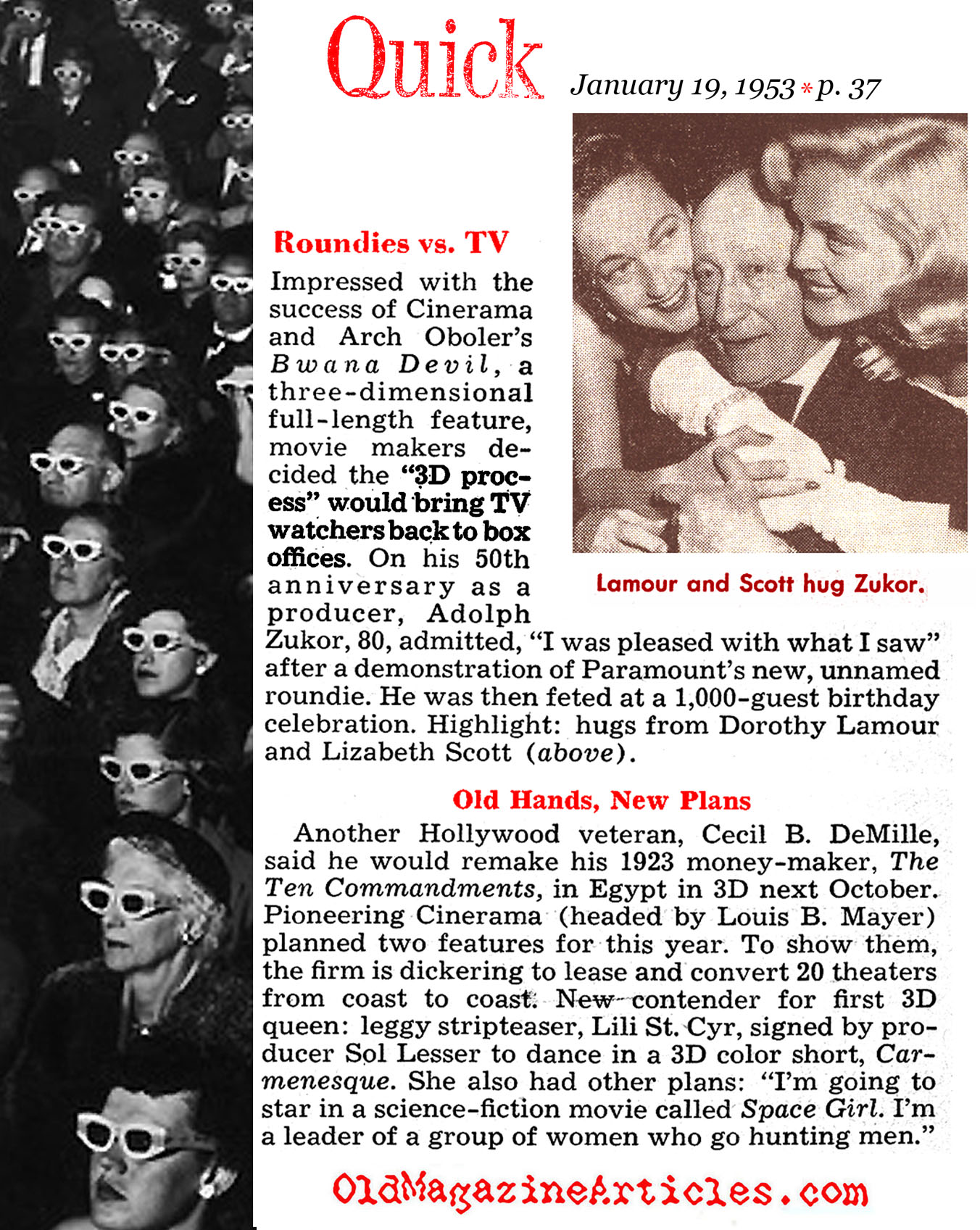

It seems that in the rush to be the first film to deliver that medium historically, Bwana Devil forgot to put together anything resembling basic filmmaking competence.
#Bwana devil movie movie
Cheaper than formats like Cinerama & Cinemascope that required curved screens & multiple projectors, 3D promised to be the most viable option for keeping movie ticket sales alive & thriving. In a time when there was a palpable fear that television was going to destroy movie ticket sales, gimmicks like 3D were thought to be cinema’s potential savior. For instance, the first full-length feature film ever released in 3D (and in color no less!) is a forgotten trifle named Bwana Devil, a film only significant for its “Natural Vision” visual gimmick. That relevant-today-forgotten-tomorrow aspect of Avatar actually has a rich history in 3D’s storied past, apparently. When Avatar was released it was a wildly successful film, mostly because it was sold as the first major advancement in the IMAX 3D format. Think, for instance, of James Cameron’s lucrative, yet oddly forgettable eco-minded blockbuster Avatar. Some films are interesting only in their historical, cultural relevance. Apparently that process has been shelved, and we are back to disposable stereoscopic lenses, essentially the same method used in 1952.” I have seen one 3-D process that works, the IMAX process that uses $200 wrap-around glasses with built-in stereo. Since then I have been attacked by arrows, fists, eels, human livers, and naked legs. My dad took me to see the first 3-D movie, Arch Oboler’s ‘Bwana Devil,’ in 1952. He said, “Faithful readers will know about my disenchantment with 3-D. What Ebert had to say in his review: Roger never reviewed the film officially, but he does recount seeing it in a blog post in which he slams the resurgence of 3D, a format he generally found distasteful. He explains that the list is so short because his Aunt Martha was more often the one who would take him to see movies as a child. The titles included A Day at the Races, Gentlemen Prefer Blondes, and the world’s first 3D feature, Bwana Devil. Where Bwana Devil (1952) is referenced in Life Itself: On page 28 of the first edition hardback, Ebert recounts a small list of films he remembers seeing at the cinema with his parents.

This one is only worth a look for its historical significance, if you’re curious.Roger Ebert Film School is a recurring feature in which Brandon attempts to watch & review all 200+ movies referenced in the print & film versions of Roger Ebert’s (auto)biography Life Itself.

Notable Performances, Qualities, and Moments: … to the “location” shooting in the Santa Monica mountains (supplemented by more authentic 2D footage Oboler caught in 1948).īosley Crowther got it right in his original review for the New York Times, in which he describes the film as having “little or no stimulation of a pictorial or dramatic sort.” To be honest, I was much more intrigued to read about the real-life story this movie was based on - the Tsavo man-eating lions - than watching the film itself. Unfortunately, everything else about the film is notably undistinguished - from its so-so acting: This 3D adventure film by director Arch Oboler is notable for being the first feature-length film shot in color 3D, and for being the enormously popular movie watched by audience members in the classic photograph we’ve all seen for Time Magazine. In late 19th century British East Africa, a man (Robert Stack) in charge of a railroad building project stymied by the presence of two man-eating lions becomes obsessed with hunting them down - and the situation turns even more perilous when his wife (Barbara Britton) appears for an unexpected visit. “What’s all this nonsense about a man-eating lion?”


 0 kommentar(er)
0 kommentar(er)
